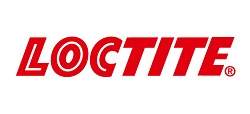Maintenance personnel know how important cleaning is to maintaining efficient turbines. Airborne particles inevitably ingress into the gas turbine compressor, fouling the air path surface. This leads to reduced efficiency and increased fuel consumption.
The question is whether the cleaning should be done online or offline. Both methods are complementary, and both are important.
Causes of compressor fouling
First, let’s examine what causes compression fouling.
The most common issue is blade fouling caused by airborne particles. This is the case about 70% of the time. To prevent this, you can install an air filter at the inlet.
Another common problem is oil leakage from the compressor rotor inlet bearing. This causes compressor vane fouling and cannot be reduced by even the best quality filters as oil leakages happen after air filters in the flow path of air.
The resulting drop in airflow and pressure ratio results in ‘re-matching’ of the compressor and turbine and causes a drop in efficiency. Front compressor stages are fouled the most. Therefore, periodic cleaning needs to be done to restore efficiency.
Online cleaning
Online cleaning is performed when the gas turbine is operating and under load. It maintains compressor cleanliness after offline washing and minimises power losses while ensuring efficiency. Online cleaning also extends the operating period between shutdowns.
The online cleaning procedure involves:
• Injecting a mixture of water and chemical detergent via atomizing spray nozzles placed around the compressor air inlet plenum
• A flushing period using pure (demineralised) water
• Discharging effluent (this usually needs to be treated before disposal)
Online cleaning is generally recommended every three days to weekly. The duration of the wash varies according to the degree of fouling, the turbine size, air quality at the plant location and plant experience.
Offline cleaning
Offline cleaning is performed when a compressor is dirty in order to restore power and efficiency. This returns the compressor to virtually ‘new and clean’ values.
The offline cleaning procedure involves:
• Rotating the turbine at crank speed while a cleaning fluid is injected
• Injecting a cleaning fluid made from a mixture of a chemical detergent and water via permanently mounted (or in very few cases handheld) nozzles installed at the air inlet
• Draining effluent water from the compressor
• Disposing effluent water according to local regulations
Offline cleaning is generally recommended three to four times a year, but this can vary depending upon your plant’s specific operating conditions.
An important consideration
The type and degree of gas turbine compressor fouling is site-specific. Your cleaning program should be adjusted as needed based on your unique situation. Both online and offline cleaning recovers average output power, and both methods complement each other.
Considerations for chemical cleaners
Turbine and compressor cleaners can generally be water-based or solvent-based (detergents).
Detergents enhance the removal performance on deposits, especially from the blades. They’re more beneficial during offline cleaning than online cleaning.
Water-based cleaners are more popular due to environmental and safety considerations. A neutral pH-value is preferred.
Henkel’s turbine compressor cleaning solutions
Henkel offers a line of BONDERITE cleaners that provide proven technology for efficient turbine cleaning.
These cleaners have gone through and performed well in Naval Air Systems Command (NAVAIR) compressor cleaner testing. The tests involved engines fouled to 25% power loss that were cleaned three times.
50 cleaners were tested and BONDERITE T-6783 was found to be the best online wash with a 22% improvement, and the second-best offline wash. The testing also found that detergent cleaners were better than water only.
At Henkel, we have more than 80 years of experience in cleaners and conduct extensive R&D testing to offer new innovations to customers. BONDERITE cleaners are approved by OEMs including GE, Alstom, and P&W and are a cost-effective solution to keep turbines running efficiently.

